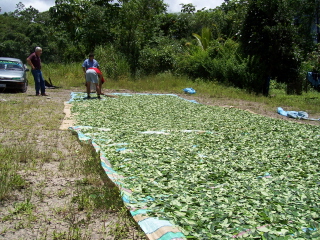Among the likely choices for Obama's running mate, Joe Biden was not the person reformers were hoping to see on the democratic ticket. Radley Balko sums up Biden's drug war credentials:
…from a policy perspective, it’s a disaster. Biden has sponsored more damaging drug war legislation than any Democrat in Congress. Hate the way federal prosecutors use RICO laws to take aim at drug offenders? Thank Biden. How about the abomination that is federal asset forfeiture laws? Thank Biden. Think federal prosecutors have too much power in drug cases? Thank Biden. Think the title of a “Drug Czar” is sanctimonious and silly? Thank Biden, who helped create the position (and still considers it an accomplishment worth boasting about). Tired of the ridiculous steroids hearings in Congress? thank Biden, who led the effort to make steroids a Schedule 3 drug, and has been among the blowhardiest of the blowhards when it comes to sports and performance enhancing drugs. Biden voted in favor of using international development aid for drug control (think plan Columbia, plan Afghanistan, and other meddling anti-drug efforts that have only fostered loathing of America, backlash, and unintended consequences). Oh, and he was also the chief sponsor of 2004’s horrendous RAVE Act.
On the other hand, Biden has recently spoken out against the crack/powder sentencing disparity and introduced legislation to address that issue. Pete Guither also notes that Biden's votes on civil liberties issues have consistently improved over the years, which may be a sign that he's evolving in his thinking. But I see no evidence that Biden has ever stepped back in any meaningful sense from his rabid drug warring ways. If he's made any philosophical realignments on drug policy in general, he hasn't said so out loud.
Thus the silver-lining may be that as Vice President, Biden would no longer be serving on the judiciary committee, where he's exerted his influence in the form of the various atrocities outlined above. As VP he'd technically be losing his authority over drug policy issues, except to whatever extent Obama may seek his advice when selecting the drug czar and so forth. It's certainly possible that Obama's more enlightened views would prevail within his administration, or even that Biden's "tough on crime" credentials could provide cover for reform, but Biden would be a strange ingredient in the behind-the-scenes reform agenda that's so often attributed to Obama by liberal reformers. It was bad enough when Obama softened his reform positions to avoid attacks from the right. Will he now begin watching his step around his own running mate?



